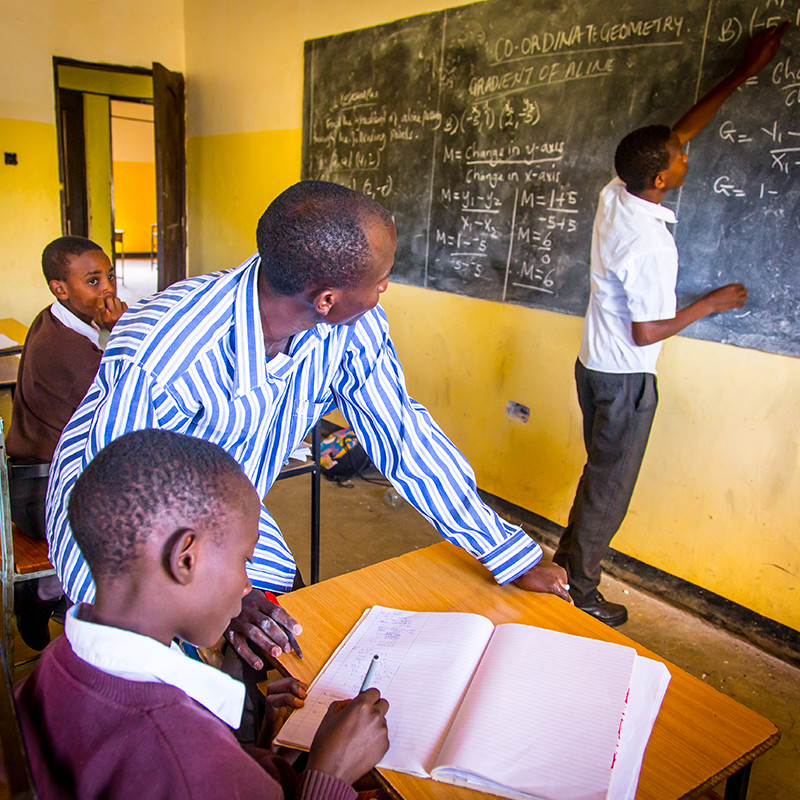Big data means investors should look again at African education

As delegates gather in Kigali for the World Economic Forum on Africa this week, they may be encouraged to hear how the digital revolution can help transform Africa’s education systems.
It cannot happen fast enough. Despite impressive progress, some 30 million children in Africa are out of school and this number appears to be growing.
At least part of this crisis comes from a lack of funding for education. African governments spend an average 18 percent of their total spending on education, higher than any other region in the world, but this has not been enough. Meanwhile, donors are slowing their aid to education.
With governments unable to fill the gap – and unwilling to spend more than 20 percent of their budgets on education - the private sector must be part of the solution. Only the private sector has resources at the necessary scale. But how do we tap into private money?
The digital revolution and ‘big data’ have opened new possibilities. The ability to collect and analyse large amounts of data, provides us with priceless insights, notably on risk and how to manage it.
Take, for example, the market failure whereby global investors look for safe investments but fail to invest in African education.
From village to city all over the continent, these schools could be financially self-sustaining and they want to provide more affordable education, but – like other small businesses in Africa – they cannot access the finance to fix the bathrooms, equip their classrooms, or pay for extra teachers.
Meanwhile, investors, especially impact investors, are looking for a place to invest their funds. Many investors will accept modest returns if the risk is small. Impact investors aim to benefit society too.
But for too many investors, Africa’s education is off the radar. They don’t have enough information to make the right decision. They don’t understand how to access this market. And they wrongly assume the risk is too high.
Big data meets microfinance
But big data and appropriate financial products are unlocking this sector. For a decade now, my organization, Opportunity EduFinance, has been raising private and other funds for use as microloans in the education sector. And all this time, we have been collecting data. We collect it in a consistent format, entering it into a single database that covers both financial performance and social impact.
By analyzing this data, we are able not just to understand the nature of risk but to bring those risk levels right down. Today, the repayment rates on our loans – both to schools and to parents - are more than 99 percent. This should reassure any potential investors.
And this is exactly what we are seeing. In a two year period, 2014-2015, we have raised enough money to increase our lending from private investors by 221 percent, working with microfinance institutions (MFIs) in country. We think there’s plenty more to come. Impact investors and corporate donors want to protect their money but they’re glad to have social impact if their investments look sound.
These MFIs and their supporters certainly get a bang for their buck. Data from Uganda suggests that a US$10,000 school improvement loan typically boosts the number of pupils at schools from 250 students to 304 students within less than three years, a growth of 22.5 percent. The same loan also funds staff increases of 33.6 percent, so student-teacher ratios also improve.
And lest we think it’s all about student numbers, the schools who achieve this growth find they have increased time and energy to improve their education quality too. In a recent study, schools with access to finance had literacy-rate increases that were 60 percent higher than for a control group of schools that did not have access to finance.
These loans are not expensive, and because they are paid back, the money can be used again and again and again. When a donor gives us US$10,000 for use in Africa, we’d expect to lend that US$10,000 an unlimited number of times. We’re not giving money to schools, we’re injecting finance into the system.
These will be small amounts of money for many investors, but microfinance is the perfect vehicle for disbursing sizeable investments as small loans to many people. To date, we have disbursed over US$60 million in education loans to benefit as many as 1.1 million children.
Affordable private schools - controversial for some
Our work is almost exclusively with affordable private schools, which we understand may be controversial for some. But Sub-Saharan Africa now accounts for more and more of the world’s out-of-school children. Most governments and donors have been unable to keep pace. The UN Special Envoy for Global Education, Gordon Brown, would surely agree with us: we must put ideology aside in favour of practical solutions.
After all, the digital revolution has brought new opportunities to analyse this sector, identify effective solutions, and to provide the evidence that will attract the critical private money. With these opportunities now available, investors should take a closer look at Africa’s education sector. For the sake of Africa’s children, it’s time to scale this up.